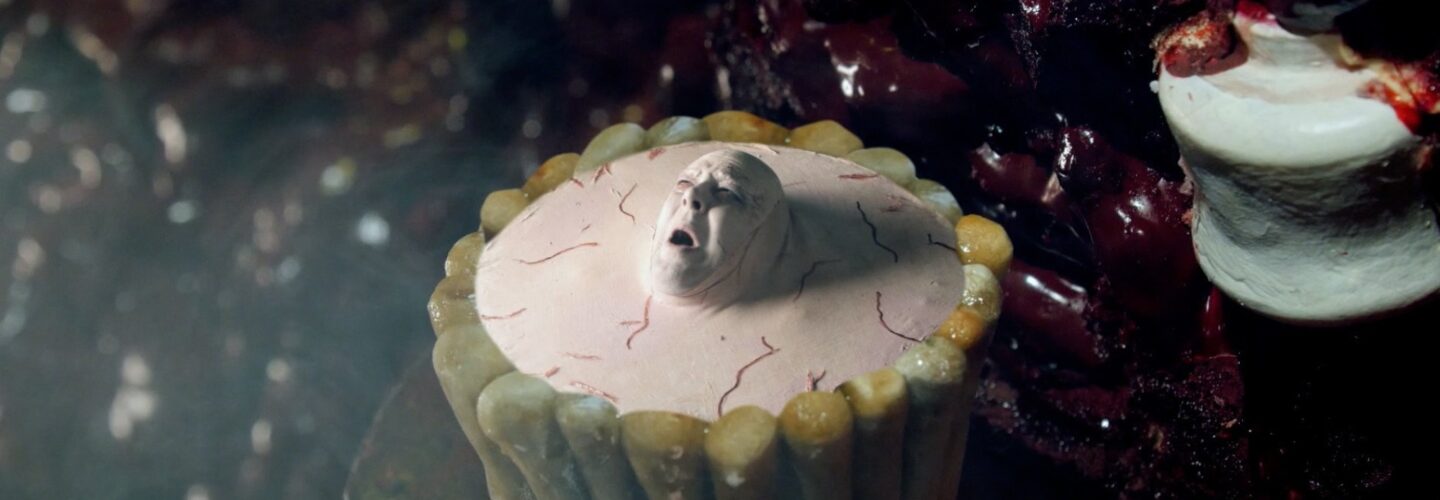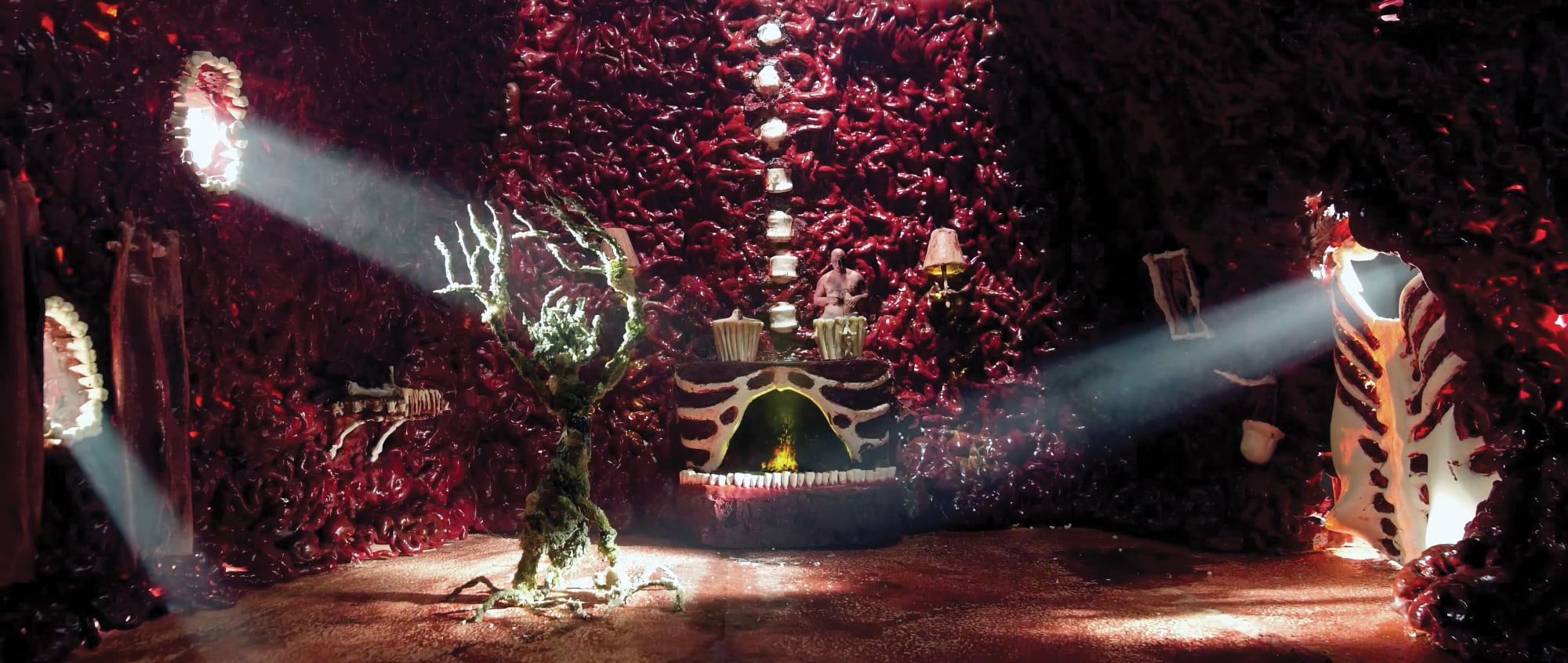
The fundamental roles of the natural world are reversed in Benjamin Roberds’ twisted horror comedy Your Houseplants Are Screaming, which presents a reality where humans are the house ornaments sitting atop shelves in stationary positions whilst the plants wonder about, forgetting to feed them, in their grotesque houses built of flesh, meat, muscle and bone. This bombastic, practically-rendered playfulness is central to the work of Roberds, a filmmaker who’s been featured on DN several times with his inventive music video work with the band Don Broco. Now, as Your Houseplants Are Screaming arrives online, we caught up with Roberds for a conversation covering the origins of the wonderfully weird premise of his short, the journey of making it with his sole collaborator and Dominar Films Producer Katie Gregg, and the challenge of melding practical, stop motion and digital effects coherently to create the film’s joyfully disturbing tone.
How on earth did you come up with the concept of this brilliantly mad short film?
During the early days of the pandemic, I woke up one morning, looked at our houseplants on the shelf and thought, “It would suck to be them”. The film centers around human houseplants forced to live in a plant monster’s world. Everything is inverted, so instead of houses being built out of wood, they’re built out of intestines and bone.
I woke up one morning, looked at our houseplants on the shelf and thought, “It would suck to be them”.
From what I’ve read you had a super small crew on this, what advantages/challenges did that bring to the creative process?
We made the film as a crew of only two people, Katie Gregg and I. So, we were able to really take our time in pre-production to plan and craft everything we needed. Katie constructed the miniature set out of painted insulation foam, chicken bones and sculpted teeth. The shot list was especially long with me playing both the characters, doubling our coverage on the green screen.
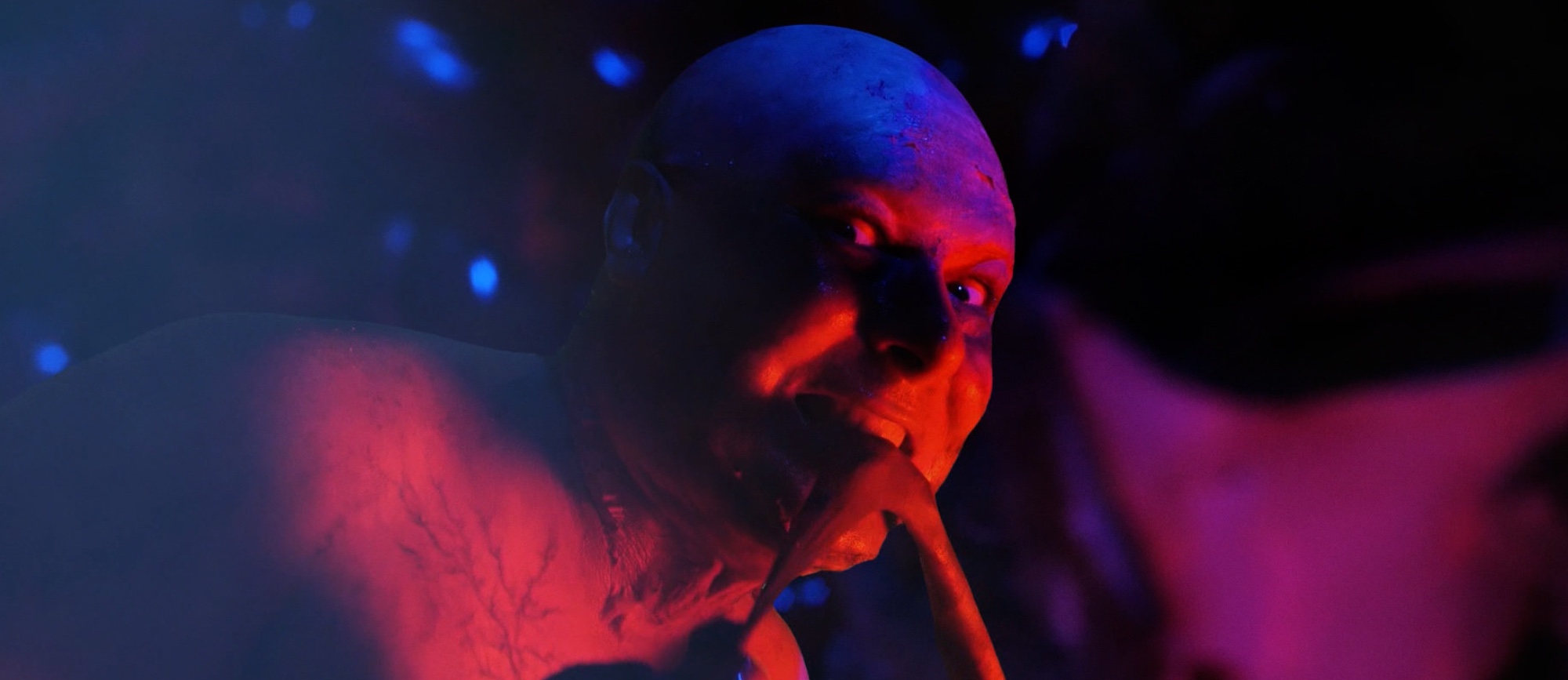
Was it a similar case with post? I imagine the effects work would’ve taken a fair amount of time.
Post-production was more rushed than pre-production. We were down to the wire making the deadline for Dances With Films, a festival that’s been a big supporter of our music videos in the past and holds a great event at the Chinese Theater. We composited the shots of me into the miniature set. My post-production timeline was over one hundred linked After Effects comps that would occasionally unlink and give me a brief heart attack.
In addition to After Effects, what kit and software did you use to bring Your Houseplants Are Screaming to disturbing life?
We used a Canon 5D for stop motion and Panasonic GH4 for video. Katie used a program called DragonFrame for the animation and captured the audio using a Sennheiser shotgun mic attached to a Zoom H4N recorder.
What was the creative process behind the practical effects and the look of yourself as human houseplant?
Katie animated the wireframe plant monster while I animated the lights creating the timelapse illusion. The last step of the process was Katie applying the SFX makeup to me and filming in front of the green screen. For the smaller houseplant, I squeezed through a sheet of liquid latex stretched over a hula hoop.

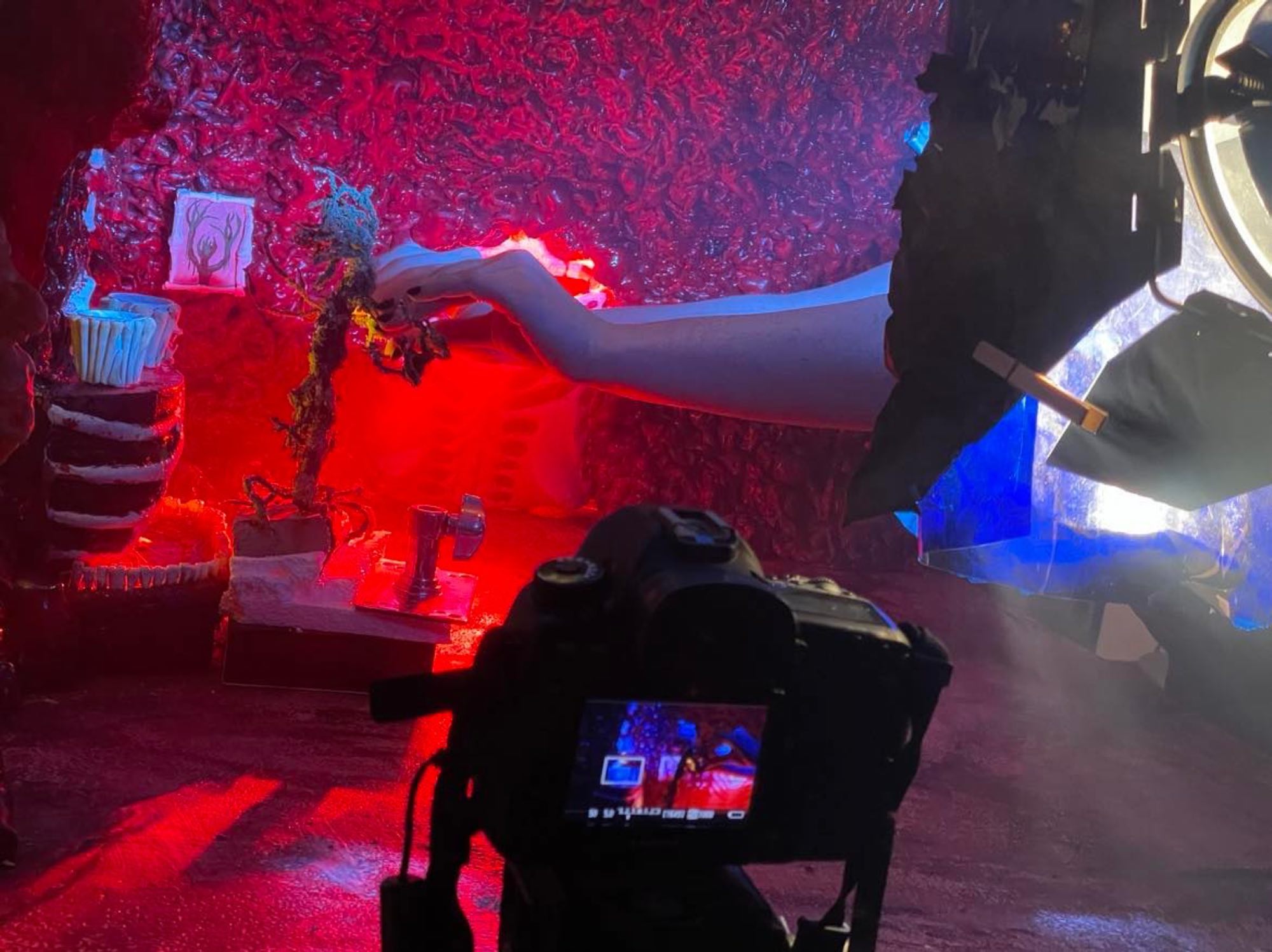


How long were you working on Your Houseplants Are Screaming? And how has it felt being able to share it at so many festivals?
Overall, it took about a year to complete the film. We premiered at Dances With Films and continued to screen at Slamdance, Fantasia and won Best Midnight Short at the Palm Springs ShortFest. The short really surpassed all of our expectations and the feedback continues to blow us away as more people allow themselves to be put in the shoes (or pots) of houseplants.
We always prioritize practical effects because I feel like it always pays off to take the time and craft things that can exist in front of the camera.
Once you had landed on the concept of human houseplants, was it easy to flesh it out into a narrative and trajectory for the story?
The narrative came really naturally as I leaned into the idea of this plant monster’s world. The jumps in time were easy to wrap my head around in the writing phase and only become more complicated when it came time to shoot. We knew we wanted to try making a short just the two of us so I reluctantly wrote myself playing the houseplants.
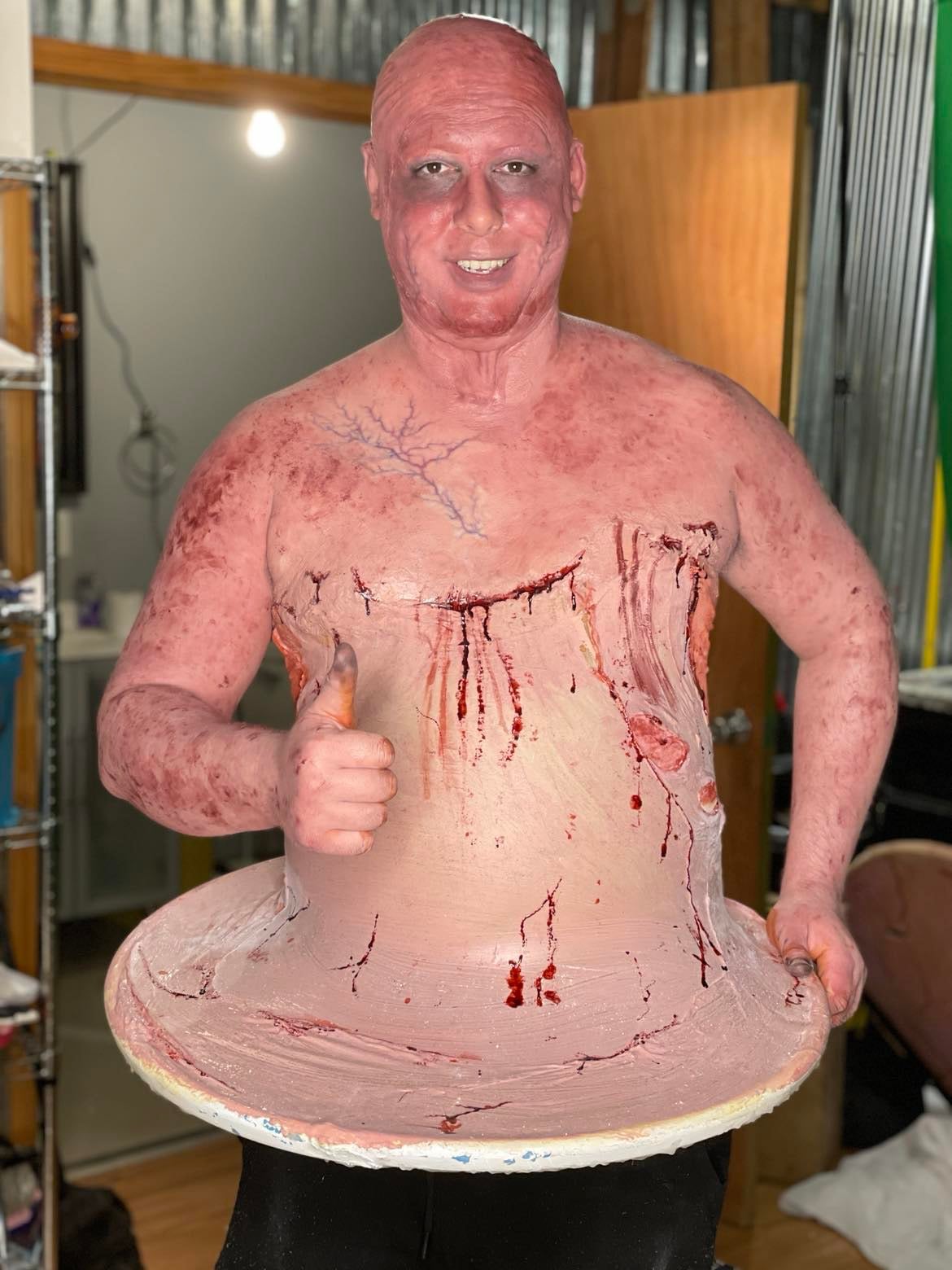


I wrote it very quickly compared to other scripts I’ve written. The first draft was so absurd that it changed very slightly over the long course of pre-production. I rewrote it several times but we kept agreeing that it was better to revert back to that first draft.
A lot of your work embraces the use of practical effects, what draws you to working that way?
Having the miniature set to work off of felt like a visual anchor for us and matching the lighting on the green screen really helped composite everything together. We always prioritize practical effects because I feel like it always pays off to take the time and craft things that can exist in front of the camera. It makes it feel like something was captured as opposed to manufactured.
Is there anything you can tell us about what you are working on at present?
We’re currently working on a feature film with just as many gory practical effects as this short. We’re polishing up the script now and hope to begin shooting soon.

